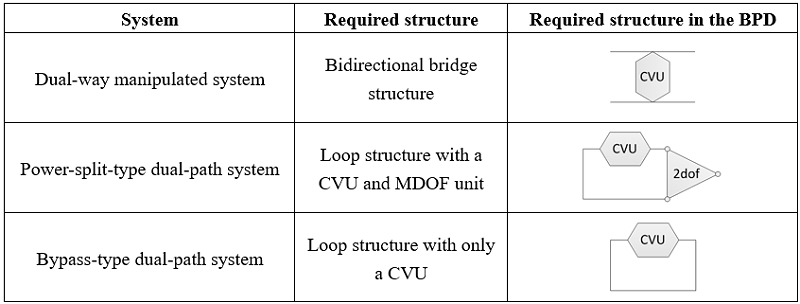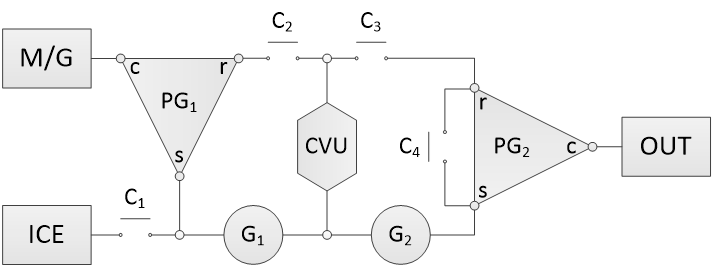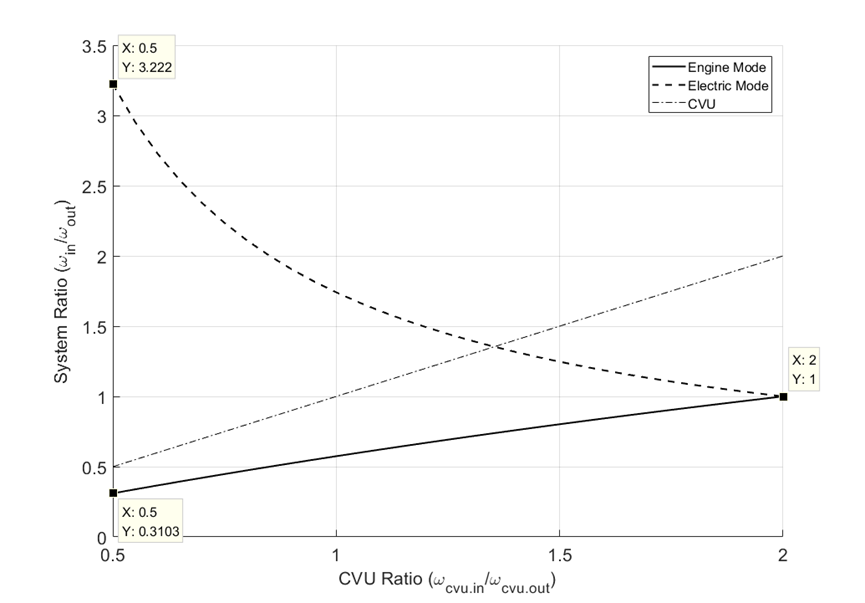To increase the energy efficiency of road vehicles, an ideal transmission system should have a wide ratio coverage, a high torque capacity, and a high mechanical efficiency. Continuously variable units (CVUs) have been successfully implemented due to the smooth ratio variation, sufficient torque capacity, and ratio coverage. Hence, it will be beneficial to develop a hybrid powertrain comprising a CVU. In this paper, a design method called the “basic path diagram” (BPD) is proposed.
This powertrain provides a simplified schematic of the system and represents the generic connections among the mechanical components. The system configurations synthesized by the BPD can be sorted according to three characteristics: Direction of power flows through the CVU, coupling pattern of the power inputs, and number of transmission paths parallel to the CVU. The first characteristic determines the number of times the CVU ratio coverage can be exploited, the second characteristic determines whether the torque of the power inputs can be independently controlled, and the third characteristic can help reduce the torque loading of the CVU. With the aid of a BPD, one of the possible system configurations is provided as an example. The result shows that the system can exploit twice the ratio coverage of the CVU and reduce the torque and power transmitted by the CVU in combination with planetary gearsets. (機械系劉霆教授提供)
Table 1. Required structures of dual-way manipulated systems and dual-path systems.


Figure 1. BPD of the synthesized system.

Figure 2. FPG of the synthesized system developed by a BPD.

Figure 3. Ratio variation of the electric mode, the engine mode, and the CVU.